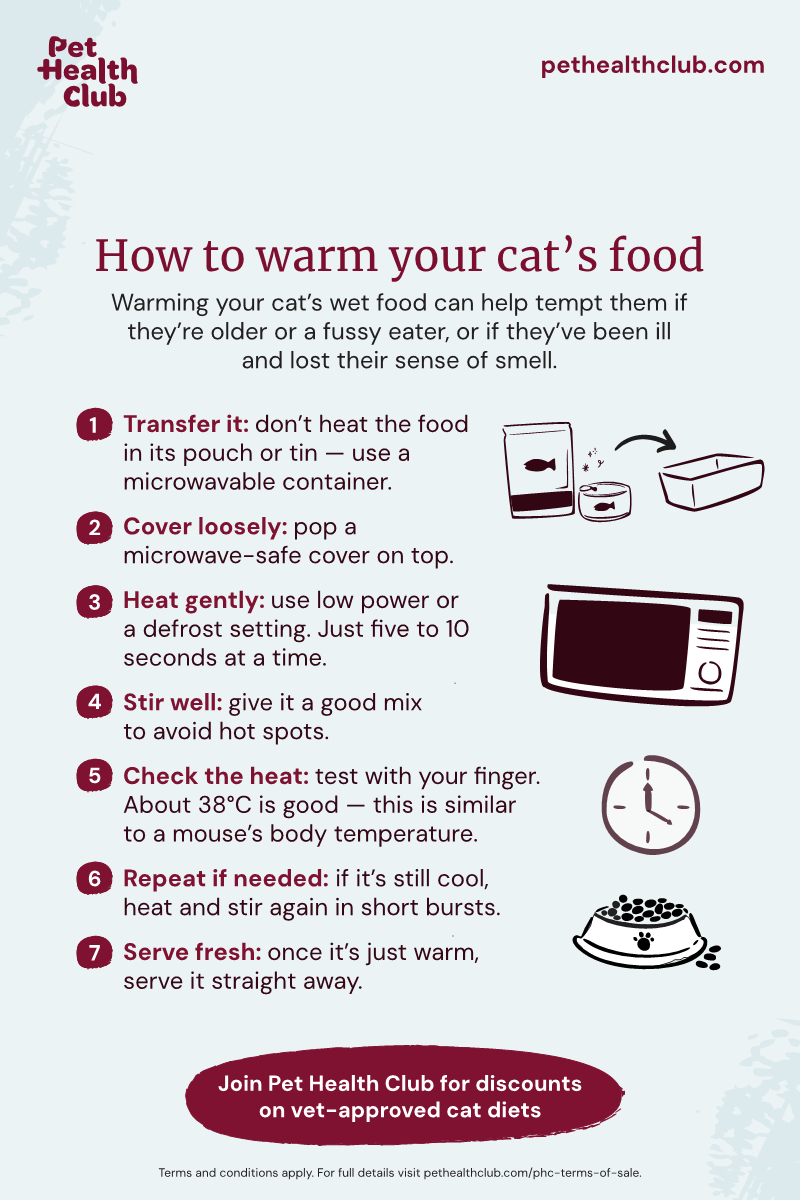Changing your cat’s food can feel like a real challenge. You want to give your furry friend the best nutrition, but getting them to try something new isn’t always easy.
If your cat turns up their nose or walks away, you’re not alone. The good news is, with the right approach, you can help your cat enjoy their new meals without stress. Keep reading to discover simple, effective tips that will make the transition smooth for both you and your pet.
Reasons Cats Reject New Food
Cats can be very picky about their food. They may reject new food for several reasons. Understanding these reasons helps in making changes easier and less stressful for both the cat and owner.
Taste And Smell Preferences
Cats rely heavily on taste and smell to decide if food is good. New food may have a different smell that cats find unappealing. Some cats prefer strong flavors, while others like mild tastes. A sudden change in flavor can cause refusal. Cats may also reject food if it contains unfamiliar ingredients.
Texture Sensitivity
Texture plays a big role in a cat’s food choice. Some cats like crunchy kibble, while others prefer soft, wet food. A change in texture can be confusing or unpleasant. Cats may avoid food that feels strange in their mouth. Even small differences in size or hardness can cause rejection.
Health Issues
Health problems can affect a cat’s appetite and food acceptance. Dental pain can make chewing difficult. Digestive issues may cause discomfort after eating certain foods. Illnesses can reduce the sense of smell and taste. Always check with a vet if food refusal lasts long or is sudden.

Credit: www.weruva.com
Preparing Your Cat For New Food
Introducing new food to your cat requires patience and care. Cats can be picky eaters, and sudden changes may cause stress or refusal to eat. Preparing your cat properly helps make the transition smooth and comfortable. This increases the chance your cat will accept the new food without fuss.
Gradual Food Transition
Start by offering a small amount of new food alongside the current one. Slowly increase the new food portion over 7 to 10 days. This gentle shift helps your cat’s stomach adjust to the change. Sudden switches can upset digestion or cause refusal.
Mixing Old And New Food
Mix old and new food in the same bowl to encourage tasting. Begin with mostly old food and a little new food. Over days, change the ratio to mostly new food and less old food. This blending reduces suspicion and helps your cat accept the new flavors.
Maintaining Feeding Routine
Keep feeding times consistent to provide comfort and security. Cats thrive on routine, and changing meal times can increase stress. Offer food in the same place and at the same times daily. This routine supports a calm environment for trying new food.
Enhancing Food Appeal
Changing a cat’s diet can be challenging. Cats rely heavily on smell and texture to accept food. Enhancing the appeal of new food can encourage your cat to try and enjoy it. Small changes can make a big difference in their willingness to eat.
Warming The Food
Warming food releases its aroma, making it more attractive. Heat it slightly in the microwave or warm water. Avoid overheating to prevent burns or loss of nutrients. Warm food mimics the temperature of fresh prey, which cats prefer.
Adding Tasty Toppers
Toppers add flavor and texture to new food. Use small amounts of cooked chicken, tuna juice, or low-sodium broth. Sprinkle crushed treats or freeze-dried meat on top. These extras can entice picky cats to try unfamiliar meals.
Using Wet Vs Dry Food
Wet food has higher moisture and stronger aroma than dry food. Cats often prefer wet food for its softness and scent. Dry food is crunchy and helps clean teeth but may be less appealing. Mixing wet and dry food can provide variety and increase interest.

Credit: www.pethealthclub.com
Creating A Comfortable Feeding Environment
Getting your cat to try new food can be tricky, but the environment where you feed them plays a big role. Cats are sensitive creatures who need a sense of safety and calm to feel comfortable eating. Creating a feeding space that meets their needs can make them more willing to explore new flavors.
Quiet And Calm Space
Choose a spot away from loud noises and high traffic areas. Cats eat better when they feel relaxed and undisturbed. I noticed my cat refused new food until I moved her bowl to a quiet corner where she could eat peacefully without sudden sounds or movements.
Think about your cat’s natural instincts. They prefer to eat where they can watch their surroundings but not feel threatened. If your home is busy, consider closing doors or using a room divider to create a calm zone.
Proper Bowl Placement
The position of your cat’s bowl impacts their comfort and willingness to eat. Avoid placing bowls next to the litter box or noisy appliances. Cats are clean animals, and proximity to their toilet can deter eating.
Place the bowl at a comfortable height, especially for older cats or those with joint issues. Experiment with different surfaces too—some cats prefer ceramic or stainless steel over plastic. Watch how your cat responds and adjust accordingly.
Fresh Water Availability
Hydration matters when you switch to new food, especially if it’s dry kibble. Always keep fresh water nearby to encourage drinking. I found that when my cat had easy access to clean water, she was more eager to eat the new food without hesitation.
Some cats prefer running water. If your cat seems reluctant to drink, try a pet water fountain. Regularly change the water to keep it fresh and appealing.
Behavioral Tips For Picky Eaters
Getting a picky cat to eat new food often requires more than just swapping dishes. Your cat’s behavior plays a big role in how willing they are to try something different. Understanding and gently guiding their eating habits can make the transition smoother and less stressful for both of you.
Positive Reinforcement
Encourage your cat by rewarding small steps toward trying the new food. Offer treats or gentle petting when they sniff or lick the new dish. This builds a positive connection with the unfamiliar taste and smell.
Try placing the new food next to their favorite snack. When they approach or nibble, praise them softly. This approach helps your cat feel safe and curious rather than threatened.
Avoiding Pressure
Pressuring your cat to eat can backfire and make them more stubborn. If your cat walks away, don’t chase or force them to eat. Instead, remove the food and try again later.
Respect your cat’s pace and mood. Sometimes stepping back gives them space to explore new tastes without anxiety. Have you noticed your cat eating more willingly after a short break?
Scheduled Feeding Times
Set regular meal times to create a routine your cat can rely on. Cats often eat better when they know when to expect food. Avoid leaving food out all day, as this can reduce their appetite.
Try offering the new food at these set times and remove it after 20-30 minutes if untouched. This signals to your cat that mealtime is limited and encourages them to eat when food is available. How might your cat’s behavior change with a consistent feeding schedule?

Credit: www.purina.com
When To Consult A Veterinarian
Switching your cat to new food can sometimes lead to unexpected challenges. While many cats adjust smoothly, certain signs may indicate underlying issues that need expert attention. Knowing when to consult a veterinarian can save your cat discomfort and ensure their diet supports their health properly.
Signs Of Health Problems
If your cat refuses to eat the new food for more than a couple of days, it could be a warning sign. Watch for symptoms like vomiting, diarrhea, lethargy, or weight loss. These symptoms suggest your cat might be experiencing digestive trouble or an allergic reaction.
Sometimes, subtle changes like excessive scratching or unusual behavior also hint at health concerns. Has your cat suddenly become less playful or started hiding more? These could be clues that a vet visit is necessary.
Nutritional Concerns
Not all cat foods are created equal; some might lack essential nutrients your cat needs. If your cat has specific health conditions—such as kidney disease, diabetes, or food allergies—choosing the right food becomes critical. You should consult a veterinarian to confirm if the new diet meets your cat’s unique nutritional requirements.
Ignoring nutritional imbalances can cause serious long-term problems. A vet can recommend supplements or prescription diets to ensure your cat stays healthy while transitioning to new food.
Professional Advice
Veterinarians have the training to identify subtle health issues that may not be obvious to you. They can suggest the best feeding schedule and portion sizes tailored to your cat’s age, weight, and activity level. Seeking their advice can prevent frustration and ensure a smoother transition.
Have you ever felt stuck trying to get your cat to eat something new? A quick call or visit to your vet can provide personalized strategies you might not find online. Their input often makes a big difference in your cat’s willingness to try new food.
Frequently Asked Questions
How To Introduce New Cat Food Gradually?
Start by mixing 25% new food with 75% old food. Increase new food amount over 7-10 days. This helps cats adjust without digestive upset. Always monitor your cat’s reaction during the transition.
Why Does My Cat Refuse New Food?
Cats may reject new food due to unfamiliar taste or smell. Texture and temperature also affect acceptance. Gradual introduction and patience help overcome this. Trying different brands or flavors can also encourage eating.
Can Warming Cat Food Encourage Eating?
Yes, warming food enhances aroma and flavor, attracting cats. Heat food to just below body temperature for safety. Avoid overheating, which can destroy nutrients or burn your cat’s mouth.
Is Mixing Wet And Dry Food Effective?
Mixing wet and dry food offers varied texture and taste. It can stimulate appetite and ease transition to new food. Ensure balanced nutrition by maintaining appropriate portion sizes for each type.
Conclusion
Helping your cat eat new food can be challenging. Patience is essential. Gradually introduce the new food. Mix it with their favorite meals. Observe your cat’s reactions closely. Some cats need time to adjust. Encourage them gently. Always consult your vet for advice.
They can offer helpful tips. A happy cat means a happy home. Keep trying and stay positive. Consistency can lead to success. Remember, each cat is unique. What works for one may not work for another. Stay patient and attentive.
Your efforts will pay off. Enjoy the journey with your furry friend.

